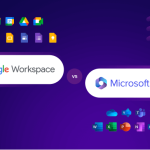In today’s rapidly evolving technological landscape, the integration of advanced AI technologies is essential for businesses aiming to stay competitive and innovative. This article explores three pivotal areas in AI: the Generative AI Strategy Framework, GPT-4 with Vision, and Automation as a Service (AaaS). By understanding and leveraging these technologies, organizations can drive significant transformation and gain a strategic edge.
Introduction
Artificial Intelligence (AI) is reshaping industries by introducing new capabilities and efficiencies. From crafting personalized content to automating complex workflows, AI technologies are proving indispensable. In this article, we’ll delve into:
- The Generative AI Strategy Framework: How to develop a robust strategy for implementing generative AI.
- GPT-4 with Vision: The advancements in generative AI models that combine language and visual understanding.
- Automation as a Service: The role of cloud-based automation in streamlining business processes.
Generative AI Strategy Framework: Building a Robust Approach
What is Generative AI?
Generative AI refers to artificial intelligence systems capable of creating new content, such as text, images, or videos, based on learned patterns from existing data. Unlike traditional AI that focuses on classification and prediction, generative AI produces novel outputs that can be used in various applications, from creative content generation to data augmentation.
Developing a Generative AI Strategy
Creating an effective generative AI strategy framework involves several critical steps:
1. Define Objectives and Use Cases
Before implementing generative AI, clearly define your objectives and identify specific use cases where generative AI can add value. Examples of use cases include:
- Content Creation: Automating the generation of marketing materials, articles, or social media posts.
- Design and Prototyping: Creating new product designs or visual concepts.
- Data Augmentation: Generating synthetic data to enhance machine learning models.
Example: A marketing firm may use generative AI to automatically produce personalized email campaigns, enhancing customer engagement and reducing manual content creation efforts.
2. Evaluate Technology and Tools
Choose the right generative AI tools and technologies based on your use cases. Some popular tools include:
- OpenAI’s GPT Models: Known for their language generation capabilities.
- DALL-E: For image generation from textual descriptions.
- DeepArt: For transforming photos into artistic styles.
Example: A design studio might integrate DALL-E into their workflow to quickly generate design prototypes based on client specifications, speeding up the creative process.
3. Establish Data Management Practices
Generative AI models require large amounts of data for training. Implement robust data management practices to ensure data quality, privacy, and security. This includes:
- Data Collection: Gathering diverse and representative datasets.
- Data Cleaning: Removing inconsistencies and ensuring data accuracy.
- Data Security: Protecting sensitive information from unauthorized access.
Example: An e-commerce company using generative AI for product descriptions must ensure that their product data is accurate and secure to avoid misleading information.
4. Integrate with Existing Systems
Integrate generative AI tools with your existing systems and workflows. Ensure compatibility with current technologies and processes to maximize efficiency and minimize disruption.
Example: Integrating AI-powered content generators with your content management system (CMS) can streamline the publishing process and maintain consistency across channels.
5. Monitor and Optimize
Continuously monitor the performance of generative AI systems and optimize them based on feedback and evolving needs. This includes evaluating the quality of generated content and making adjustments to improve accuracy and relevance.
Example: Regularly reviewing the output of an AI-driven customer support chatbot and refining its responses based on customer feedback can enhance user satisfaction and effectiveness.
Key Considerations for Implementation
- Ethical Implications: Address ethical concerns related to the use of generative AI, such as potential biases in generated content.
- Compliance: Ensure that your generative AI practices comply with relevant regulations and industry standards.
- Cost: Evaluate the cost of implementing and maintaining generative AI solutions versus the expected benefits.
GPT-4 with Vision: The Next Frontier in Generative AI
Overview of GPT-4
GPT-4, developed by OpenAI, is a state-of-the-art language model that has significantly advanced the field of natural language processing (NLP). It excels in understanding and generating human-like text based on context.
Introduction to GPT-4 with Vision
GPT-4 with Vision combines GPT-4’s language capabilities with advanced visual understanding. This integration allows the model to process and generate content that involves both text and images, expanding its application possibilities.
1. Enhanced Content Creation
GPT-4 with Vision can create rich multimedia content by generating both textual descriptions and corresponding images. This capability is particularly useful for industries such as marketing, design, and entertainment.
- Example: A digital marketing agency uses GPT-4 with Vision to create engaging social media posts that include tailored images and descriptions, enhancing visual appeal and audience engagement.
2. Improved Accessibility
By combining text and visual data, GPT-4 with Vision improves accessibility for users with disabilities. For instance, it can generate descriptive text for images, making visual content more accessible to individuals with visual impairments.
- Example: An online news platform utilizes GPT-4 with Vision to automatically generate descriptive captions for news images, improving accessibility for visually impaired readers.
3. Advanced Data Analysis
GPT-4 with Vision can analyze and interpret complex visual data, providing insights and generating textual summaries. This capability is valuable for applications in healthcare, security, and surveillance.
- Example: In healthcare, GPT-4 with Vision analyzes medical imaging data and generates textual reports, assisting radiologists in diagnosing conditions more efficiently.
4. Creative Design and Art
The model can be used in creative design and art, generating unique artworks based on textual prompts and visual styles. This opens new possibilities for artists and designers looking to explore innovative concepts.
- Example: A design studio leverages GPT-4 with Vision to generate artistic concepts based on client briefs, providing a range of creative options for review and refinement.
Benefits of GPT-4 with Vision
- Versatility: Combines text and visual capabilities for diverse applications.
- Efficiency: Speeds up content creation and data analysis processes.
- Innovation: Opens new avenues for creativity and accessibility.
Automation as a Service (AaaS): Streamlining Business Operations
What is Automation as a Service?
Automation as a Service (AaaS) refers to cloud-based services that provide businesses with tools and platforms to automate various processes. AaaS allows organizations to implement automation without investing in extensive infrastructure or developing custom solutions.
Key Features of AaaS
1. Scalability
AaaS platforms are designed to scale according to business needs. Organizations can start with a small implementation and expand automation efforts as required, accommodating growth and changing requirements.
- Example: A small retail business begins with AaaS to automate inventory management and later scales up to include order processing and customer service automation.
2. Cost-Effectiveness
AaaS offers a pay-as-you-go model, allowing businesses to pay only for the automation services they use. This reduces upfront costs and makes automation accessible to organizations of all sizes.
- Example: A startup uses AaaS to automate its marketing campaigns, benefiting from reduced costs compared to building an in-house automation system.
3. Ease of Integration
AaaS platforms provide easy integration with existing systems and applications. This ensures that automation processes can be seamlessly incorporated into current workflows.
- Example: An enterprise integrates AaaS with its CRM system to automate customer data entry and follow-up tasks, enhancing operational efficiency.
4. Advanced Analytics
Many AaaS platforms include advanced analytics tools that provide insights into automated processes. This helps organizations monitor performance, identify bottlenecks, and optimize automation strategies.
- Example: A financial services firm uses AaaS analytics to track the efficiency of automated fraud detection processes, making data-driven improvements.
Use Cases for AaaS
1. Customer Service Automation
AaaS can automate customer service tasks such as handling inquiries, managing support tickets, and providing responses through chatbots. This enhances customer experience and reduces the workload on support teams.
- Example: An e-commerce company deploys an AaaS chatbot to handle common customer queries, resulting in faster response times and improved customer satisfaction.
2. Process Automation
AaaS platforms can automate various business processes, including data entry, document management, and workflow coordination. This reduces manual effort and minimizes errors.
- Example: A healthcare provider uses AaaS to automate patient appointment scheduling and billing processes, improving efficiency and accuracy.
3. Marketing Automation
AaaS enables businesses to automate marketing tasks such as email campaigns, social media posting, and lead nurturing. This helps businesses reach their audience more effectively and efficiently.
- Example: A marketing agency uses AaaS to automate its email marketing campaigns, segmenting audiences and sending personalized messages based on user behavior.
4. Financial Reporting
AaaS can automate financial reporting tasks, including data collection, analysis, and report generation. This streamlines the reporting process and ensures timely and accurate financial information.
- Example: A multinational corporation leverages AaaS to automate its financial consolidation and reporting processes, reducing the time required to produce monthly financial statements.
Benefits of AaaS
- Efficiency: Streamlines business operations and reduces manual effort.
- Flexibility: Offers scalable solutions that adapt to business needs.
- Accessibility: Makes automation tools available to organizations of all sizes.
- Innovation: Enables businesses to adopt cutting-edge automation technologies without significant upfront investment.
Conclusion
The integration of AI technologies, including the Generative AI Strategy Framework, GPT-4 with Vision, and Automation as a Service, is transforming the way businesses operate. By developing a robust generative AI strategy, leveraging advanced models like GPT-4 with Vision, and adopting cloud-based automation solutions, organizations can enhance efficiency, drive innovation, and achieve a competitive advantage.
As AI continues to evolve, staying informed about these advancements and their applications will be crucial for businesses looking to harness the full potential of AI. Embracing these technologies today will pave the way for a more efficient, innovative, and successful future.



